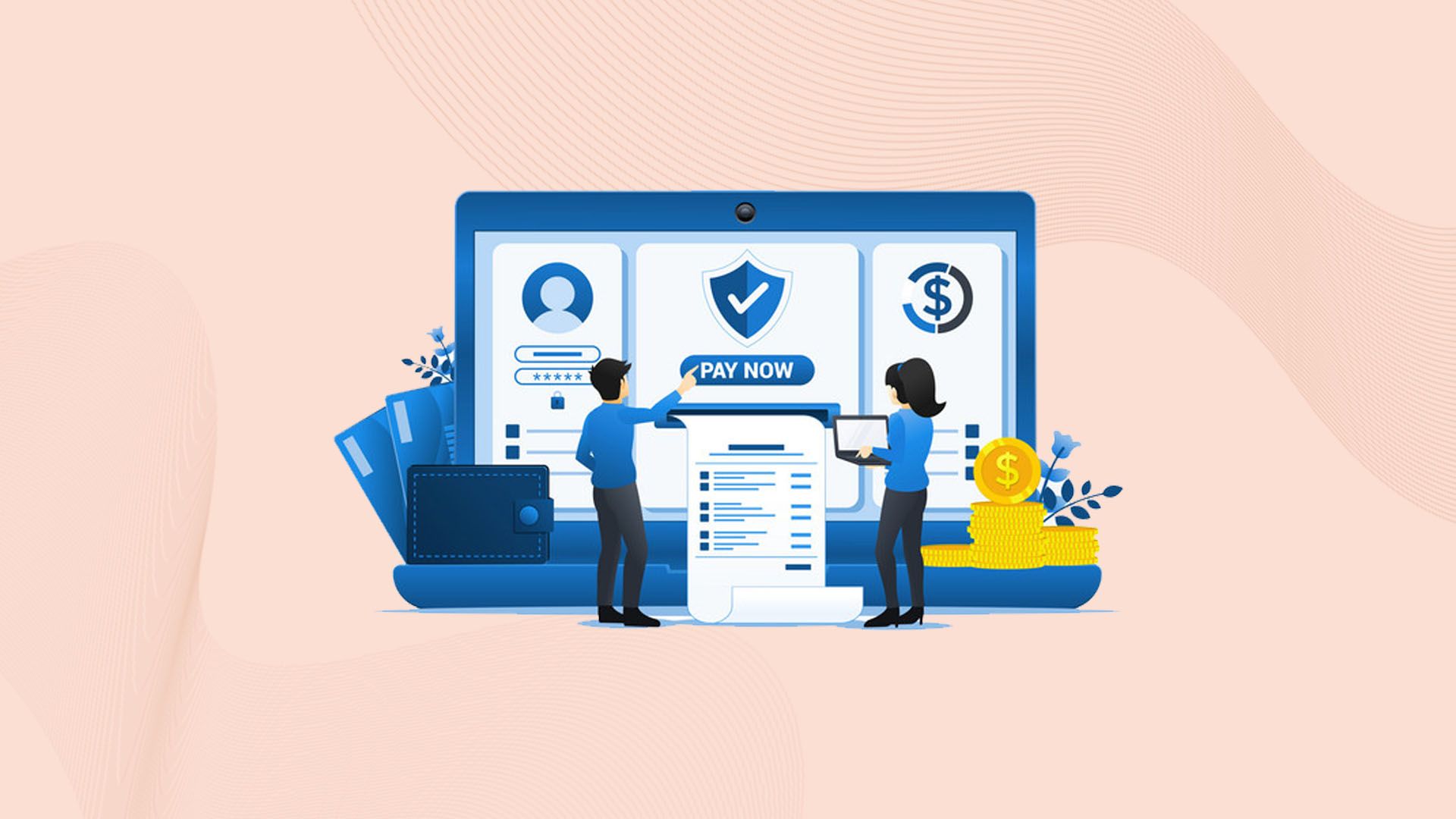Chargebacks are one of the main challenges that online retailers all around the world are dealing with right now. Frequent chargebacks not only cost the merchant money, but they also boost processing costs, undermine the merchant's reputation, and, in the worst situations, lead to account suspension. In this case, utilising innovative ways to stop fraud is no longer a choice; it is now a must. Using a payment gateway that supports 3DS is one of the best methods to do this. This makes things safer for both businesses and customers.
3D Secure (3DS) authentication checks the cardholder's identification at checkout to stop false transactions. It also typically means that the bank that issued the card is now in charge of settling issues instead of the business. This will shift the game for internet stores that wish to grow safely.
Understanding 3D Secure and Payment Gateways
3D Secure (3DS) is a security technology that is used a lot to keep credit and debit card transactions safe online. The card network (Visa, Mastercard, American Express, Discover, etc.), the issuing bank (the cardholder's bank), and the acquiring bank (the merchant's bank) all work together to make sure a transaction is real.
Visa came out with the protocol in 1999, and it quickly became the standard for the whole industry. Card schemes improved the technology over time so that it performed better and was easier to use. A payment gateway that supports 3D Secure adds this protocol directly to the checkout process for the merchant. The gateway requests that the customer prove who they are during the transaction. You can do this by using their banking app to approve the payment, entering a one-time password (OTP), or utilising biometric authentication, such as a fingerprint scan.
The main purpose is to discourage people from using cards without permission in card-not-present (CNP) transactions, which are the most likely to be fake. This measure not only makes things safer, but it also makes people feel better about purchasing at a store.
How 3DS Reduces Chargebacks in eCommerce
A 3DS payment gateway is great since it reduces chargebacks that happen because of fraud. 3DS validates the identification of the person who owns the card when they buy something. This makes it much tougher to use stolen card information to perpetrate fraud. Because of this, it's considerably less likely that customers are telling the truth when they say they didn't authorise the purchase.
One of the best things about it is that it changes the liability. The bank that issued the card usually handles disputes about fraud after a 3DS transaction that was satisfactorily verified. This means that the seller doesn't have to pay back the money, even if the transaction was false.
But it's very crucial to know the distinction between chargebacks that are caused by fraud and those that aren't. 3DS does a decent job of cutting down on disputes over unauthorised purchases; however, chargebacks can still happen if there are problems like poor customer service, inaccuracies on the bill, late delivery, or not being happy with the merchandise. This disparity makes it evident to merchants how crucial it is to use 3DS and solid business processes to cope with other probable reasons for chargebacks.
Also read: Mozambique’s Payment Rails & How They Work – Mobile Money, Instant Transfers & Financial Inclusion
The Impact: Statistics and Real-World Results
A lot of people realise that 3D Secure authentication is quite important for online businesses. Studies demonstrate that 3DS can cut chargebacks by as much as 70%, especially when the disagreement is for fraud. More than 80% of merchants in regions where 3DS is particularly popular, like the UK and Ireland, reported that the newest versions worked well.
Visa also says that 3DS 2.0 can conduct almost all transactions without any difficulties. The system runs risk-based checks in the background without anyone knowing, so most consumers don't have to deal with extra procedures or complications at checkout. The results are improved experiences for users, fewer carts that are left behind, and more transactions that are accepted.
Even though adoption rates in North America are still lower than in Europe, experts in the field think they will keep going up. This is largely because EMV (chip and PIN) technology for in-person purchases makes it easier for scammers to employ internet techniques. As online fraud becomes more common, US and Canadian stores will need to adopt 3DS more and more.
Expert advice on how to balance between Security and Conversion
3DS has a lot of good things about it, but you need to find the proper balance between keeping customers happy and eliminating fraud in order to make it work. Customers had a lot of trouble with the first version of 3DS (1.0). Redirects to external authentication pages that made users enter their passwords typically led to confusion, anger, and significant cart abandonment rates.
To remedy this problem, card companies produced 3DS 2.0. They thought about what modern consumers would want when they developed it. It can check a lot of transactions without the client being there because it allows risk-based checks, app-based approvals, and biometric verification. For instance, if device fingerprinting, past behaviour, or other criteria show that the transaction is low-risk, the buyer can finish their purchase without having to do anything extra.
Merchants can do even better with dynamic 3DS. This technique only employs 3DS when it has to, depending on the value of the transaction, the risk profile, or the customer's past. Trustworthy customers can check out without any hassles, and machine learning-based fraud-scoring algorithms can help route payments that are likely to be fraudulent through 3DS.
Experts still think that 3DS should be part of a bigger plan to stop fraud, even with these changes. To ensure multi-layered security, 3DS should be used with additional tools, including Address Verification Service (AVS), CVV/CVC validation, and chargeback alert systems. It's crucial to employ these techniques together to stop chargebacks in high-risk fields like gaming, gambling, telemedicine, and digital goods.
Also read: Payment Rails in South Sudan: Banks, New Systems, and Mobile Money
The Best Ways for Integrating 3DS Payment Gateways
These are the greatest ways for merchants to use 3DS to make their online stores safer:
- Work with a Certified 3DS Provider: It can cost up to $1 million and take more than 18 months to set up your own 3DS server. Certified providers can help you get things up and running quickly (in as short as two to three weeks) and keep them running.
- Abstract Complexity for Customers: For clients, abstract complexity means not having to deal with misleading redirects or technological problems. Service providers should handle critical parameters such as merchant category codes, device fingerprinting, and the acquirer BIN.
- Maximise Pre-authentication: Use services like Account Name Inquiry (ANI) or Address Verification Service (AVS) to check high-value or high-risk transactions before commencing authentication.
- Stay Up to Date Continuously: Scammers change their minds quickly. Merchants remain ahead of the game by continuously updating fraud protection solutions like 3DS.
- Educate Customers: If you tell customers that most 3DS checks are hidden, they will be less likely to leave the checkout page and make mistakes.
TransFi and other platforms give organisations that want to use the newest 3DS-enabled solutions unique, scalable integrations. Retailers can achieve the appropriate balance between following the rules, making checkouts go smoothly, and stopping fraud because they know so much.
Conclusion
It is no longer optional for e-commerce enterprises to employ a 3DS payment gateway to stop online fraud. Merchants may cut down on chargebacks in eCommerce, protect themselves from liability, and make customers feel more confident by checking cardholders at checkout.
But the 3DS isn't the answer to all of your problems. In many ways, it should be thought of as the most crucial aspect of a plan to stop fraud. 3DS, AVS, CVV verification, and real-time monitoring are just a few of the tools that may assist in making payments safe and easy. By using this proactive strategy, retailers will not only protect their revenues but they will also ensure that their customers have a seamless and easy shopping experience.
TransFi helps businesses effortlessly add 3DS-enabled payment gateways by offering customised solutions that stop fraud and make the checkout process easier.
FAQs:
1. How does a 3DS payment gateway help to reduce chargebacks?
It stops false transactions by making sure the person using the card is who they say they are at the point of sale. This also means that banks that issued the cards are now in charge of fraud-related complaints instead of shops.
2. Is 3D Secure safe against all types of chargebacks?
No. It mostly stops fights about fraud. Chargebacks due to bad service, late deliveries, or billing issues are not affected.
3. How is the 3DS 1.0 different from the 3DS 2.0?
3DS 2.0 makes things easier for consumers by using biometric, app-based, and risk-based authentication. 3DS 1.0, on the other hand, used static passwords and redirection from other sites.
4. How can retailers fast integrate 3DS?
Merchants can finish integration in weeks instead of months if they partner with approved 3DS providers or payment gateways that support native 3DS.
5. Do all online stores have to utilise 3DS?
In Europe, PSD2 says that it must be done. It's not always mandatory, but it's a good idea to protect yourself from fraud and responsibility.
Table of Contents
Suggested Article
Explore our products

Make global payments at the speed of a click

Accept payments, remove borders.

Unlock Seamless Digital Currency Transactions Anywhere








.png)














